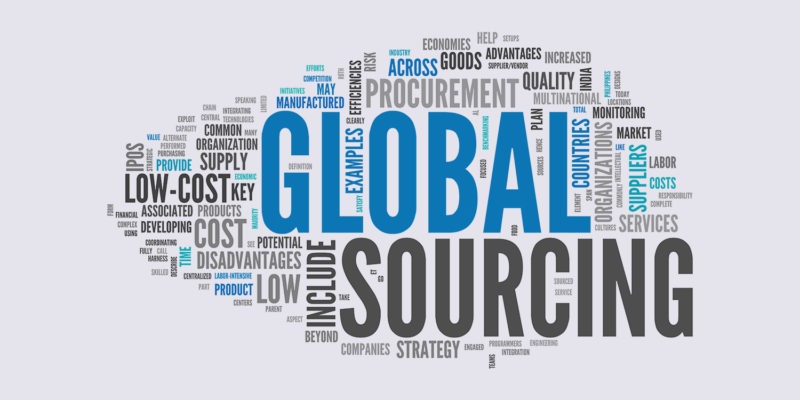Industry Radar: Impact Factors for Sourcing
How is current market volatility, led by inflationary pressures, supply-chain disruptions, and geopolitical uncertainty, impacting sourcing and supply decisions?A look at what is on the industry’s radar.
Energy supply and costs, particularly in Europe
Uncertainty in energy supply and rising energy costs in Europe continue to be a major issue as Europe deals with reduced energy supply from Russia. Gas and electricity prices reached record levels in 2021 and again hit all-time highs in 2022, especially following the Russian invasion of Ukraine, according to information from the European Commission. The higher electricity prices across Europe are intrinsically linked to the high price of gas, which increases the price of electricity due to the role of gas-fired power plants in covering demand and setting price. Prices started rising last summer (summer 2021) when the global economy picked up after COVID-19 restrictions were eased. Subsequently, Russia’s invasion of Ukraine and the ensuing reduction of gas supply into Europe exacerbated this situation with electricity retail prices increasing by almost 50% year-on-year from July 2021; gas prices rose by more than 10 times compared to pricing before the pandemic.
Energy prices are expected to remain high due to uncertainty in the market spurred by the risk of further disruptions of Russian gas supplies to the EU. In parallel, the availability of electricity generation in the EU has been below usual levels in the last months due to increased maintenance works of power stations, lower output from hydropower generation due to extreme weather conditions in the summer, and closures of some older power plants. All these factors have contributed to energy scarcity and high energy prices.
In response to rising energy prices and uncertainty on energy supply, the European Chemical Industry Council (CEFIC), which represents European chemical manufacturers, along with representatives of other energy-intensive industries in Europe, sent a letter earlier this month (September 6, 2022) to the President of the European Commission, Ursula von der Leyen, to call for EU-wide measures aimed at limiting the price of natural gas and also measures designed to disconnect electricity prices from gas prices, pointing to the adverse effect that energy pricing has had on EU-based industrial production.
“With the EU gas peaking at 334 €/MWh TTF spot prices two weeks ago [as reported on September 6, 2022], which is 15 times its pre-crisis level, 10 times more than the US prices and well above the prices in Asia, it is clear that the relation with a normal market is lost,” said the letter from CEFIC and other European associations. “Beyond the current impact on citizens through inflation, destructive consequences on gas and electricity industrial users are inevitable. The last weeks [as of September 6, 2022] saw a great number of industrial plants shutting their doors or reducing their production in Europe and more are expected in the forthcoming weeks. These massive plants curtailments will increase Europe’s dependency on third markets for strategic supply chains and will drastically increase the global carbon emissions. For many energy-intensive industries, there is currently no business case to continue production in Europe nor visibility and certainty for investments and further developments. The effects of those closures are also starting to have a severe impact on our value chains endangering European industrial base and the availability of essential products more broadly.”
In response to the situation, the European Commission proposed earlier this month (September 2022) an emergency intervention in Europe’s energy markets to address the recent dramatic price rises, which it says will help reduce the cost of electricity for consumers (both businesses and households), and measures to redistribute the energy sector’s surplus revenues to final customers. The new proposal follows previously agreed measures on filling gas storage and reducing gas demand to prepare for the upcoming winter. The Commission is also continuing its work to improve liquidity for market operators, bring down the price of gas, and reform the electricity market design for the longer term. The Commission says it will deepen its discussion with EU member states about the best ways to reduce gas prices, analyze various ideas for price caps, and enhance the role of the EU Energy Platform, a voluntary coordination mechanism supporting the purchase of gas and hydrogen for the EU, in facilitating lower price agreements with suppliers through voluntary joint purchasing. The Commission says it will also keep working on tools to improve liquidity on the market for energy utilities and review the Temporary State aid Crisis Framework, designed to support the EU economy in the context of Russia’s invasion of Ukraine, to ensure that it continues to enable EU member states to provide necessary and proportionate support to the economy. At the Extraordinary Energy Council Meeting on September 9, 2022, Energy Ministers of EU member states endorsed the Commission’s ongoing work in these areas.
Continued inflationary pressures
A key question for the industry is whether inflationary pressures will continue as the industry, along with the broader economy, face continued inflationary pressures. Rising energy prices, along with higher costs from existing supply-chain issues that arose from the global pandemic and other higher cost inputs, has made an inflation a key issue in 2022, and the key question is whether relief is on the way. In the US, inflation ticked back up in August (August 2022), despite declining gasoline prices, according to data from the US Bureau of Labor Statistics released earlier this month (September 2022). In the US, the Consumer Price Index, which measures a basket of consumer goods and services, rose 0.1% in August (August 2022) on a seasonally adjusted basis. The annual inflation rate (based on the last 12 months ending August 2022) remains high, with prices up 8.3% year-on-year, a slight decline from the annual inflation rate of 8.5% rate reported in July (July 2022) and down from a 40-year high of 9.1% reported in June (June 2022). In the US, the slight decline in the annual inflation rate was mainly due to a 10.6% decline in the gasoline index.
Another inflation indicator in the US, the Producer Price Index, which measures the average change over time in the selling prices received by domestic producers for their output (goods and services), fell 0.1% in August (August 2022), seasonally adjusted, according to the US Bureau of Labor Statistics. On annual basis, inflation for producer prices was up 8.7% in the 12 months ended in August (August 2022), down from 9.8% in July (July 2022), marking a second consecutive month that the pace of increase slowed although the overall annual rate still remains high.
As central banks across the world simultaneously hike interest rates in response to inflation, the global economy may be edging toward a global recession in 2023, according to a recent analysis by the World Bank. It says investors expect central banks to raise global monetary-policy rates to almost 4% through 2023—an increase of more than 2 percentage points over their 2021 average. Unless supply disruptions and labor-market pressures subside, those interest-rate increases could leave the global core inflation rate (excluding energy) at about 5% in 2023—nearly double the five-year average before the pandemic, according to the World Bank analysis. To cut global inflation to a rate consistent with their targets, a World Bank model suggests that central banks may need to raise interest rates by an additional 2 percentage points. If this were accompanied by financial-market stress, global GDP growth would slow to 0.5% in 2023—a 0.4% contraction in per–capita terms that would meet the technical definition of a global recession.
Other issues
COVID-19 lockdowns in China, prompted by a rise of cases related to Omicron variants, and the country’s strict zero-COVID-19 policy, remain a concern and risk for the country and the potential for ensuing impact on businesses and industrial production. Earlier this month (September 2022), Chengdu, the capital of southwestern China’s Sichuan Province, was locked down after COVID cases were detected, becoming the largest Chinese metropolis hit with curbs since Shanghai’s lockdown in April and May of this year (2022). Although the COVID-19 restrictions in Shanghai was eased later in June (June 2022), such situations are impactful to global supply chains. China is an important source of raw materials, intermediates, and active pharmaceutical ingredients (APIs), particularly APIs for the generics market. There are over 3,000 APIs companies worldwide, of which China accounts for 48% and India 19%, according to a recent analysis by the Chemical Pharmaceutical Generic Association, which represents Italian manufacturers of active ingredients and intermediates for the generics market. A well-chronicled and continuing trend over the past decades is the increasing shifting of API manufacturing from the highly regulated markets (US, EU) toward low-cost Asian countries, particularly China and India. For example, 80% of API import volume for the EU comes from five countries: China (which accounts for 45%), India, the US, the UK, and Indonesia, according to a recent analysis by the European Commission.







